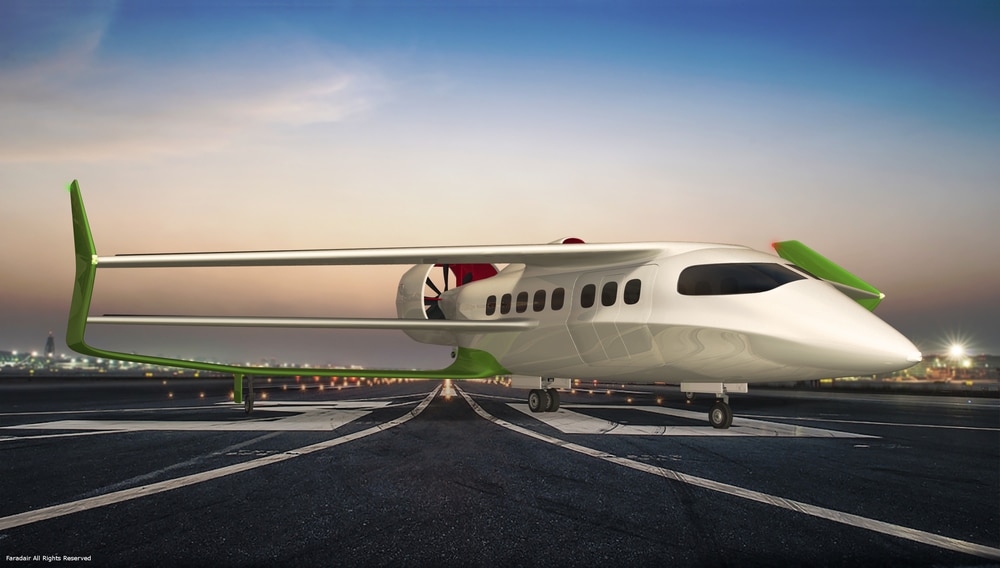
That (short haul) air mobility is set to go electric seems only a matter of time. Time is being given a helping hand, so to speak, by the development of a hybrid aircraft by the British aircraft manufacturer Faradair. The model is called BEHA, an acronym for Bio Electric Hybrid Aircraft. The word ‘hybrid’ in the name does not refer to the combination of a conventional combustion engine (kerosene) with an electric propulsion system, but to the ‘electric-biofuel’ duo.
Once it reaches cruising speed, the aircraft switches to the biofuel-driven turbo-generator
The aircraft (for which no prototype yet exists) will use electric motors for short-range take-offs and landings. Once it reaches cruising speed, the aircraft switches to its turbogenerator, powered by biofuel.
The development of fully electric aircraft is in full swing. One problem is that battery technology (heavy, large volume, relatively low range) is not yet up to par. Plus it is also difficult (as yet) to get off the ground electrically. A hybrid system may well offer some advantages.

The space between each wing and the wings themselves are designed to provide better performance. As well as in the future when a new generation of batteries becomes available.
There is one other new feature that makes Faradair different from start-ups in electro aviation (such as Volocopter and Lilium). The BEHA is a multi-purpose aircraft that can be converted from a passenger aircraft for 18 people to a cargo plane in just 15 minutes. Their maximum loading capacity is 5 metric tons.
Cost-effective triple-decker
Unlike the above-mentioned start-ups, the BEHA takes off and lands on (admittedly short) landing strips, like conventional aircraft. In contrast, most start-up solutions focus on vertical take off and landing (VTOL). Which is why they are looking primarily at techniques from the world of helipads and drones.
Hybrid-electric or fully electric flight not only fits in with the electric revolution that is currently underway, but can certainly be cost-effective as well. Obviously, these types of aircraft are also a lot less noisy than conventional aviation. There are no CO2 emissions when renewable energy is used.
Faradair is working with Honeywell (turbogenerator) and MagniX (electric motors), among others. The first BEHAs should be on the market in 2030.
Read more about the latest developments in sustainable air mobility and about the Volocopter mentioned above.








